Themed collection 2016 Lab on a Chip Emerging Investigators

Emerging Investigators 2016: discovery science meets technology
Guest editors Charles M. Schroeder, Sarah Köster and Yanyi Huang introduce the 2016 Emerging Investigators themed issue of Lab on a Chip.

Lab Chip, 2016,16, 2974-2976
https://doi.org/10.1039/C6LC90076C
Contributors to Emerging Investigators 2016
Contributors to the Lab on a Chip Emerging Investigators 2016 themed issue.

Lab Chip, 2016,16, 2977-2981
https://doi.org/10.1039/C6LC90082H
AC electric field induced droplet deformation in a microfluidic T-junction
We present a novel method for the deformation of droplets in a microfluidic T-junction using an AC electric field.
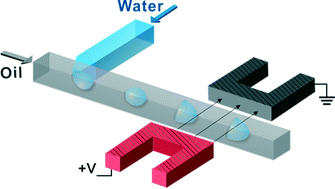
Lab Chip, 2016,16, 2982-2986
https://doi.org/10.1039/C6LC00448B
High efficiency hydrodynamic bacterial electrotransformation
Synthetic biology holds great potential for addressing pressing challenges for mankind and our planet.

Lab Chip, 2017,17, 490-500
https://doi.org/10.1039/C6LC01309K
One-step immunoassay of C-reactive protein using droplet microfluidics
A wash-free droplet microfluidic platform for C-reactive-protein-based diagnosis with reduced assay time and enhanced sensitivity.
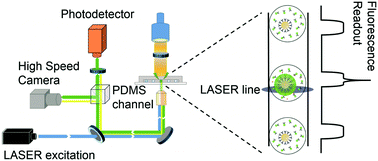
Lab Chip, 2016,16, 4359-4365
https://doi.org/10.1039/C6LC01121G
The impact of probe size on measurements of diffusion in active microrheology
A framework to study the influence of polydispersity on flow-induced diffusion in active microrheology is presented. It is found that diffusive behavior is set entirely and dually by the proximity with which two particles can approach one another, and by the extent to which this minimum approach distance is occupied by the hydrodynamic size of the forced particle.
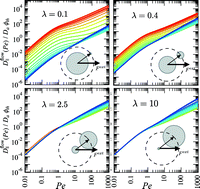
Lab Chip, 2016,16, 3114-3129
https://doi.org/10.1039/C6LC00476H
Cell-on-hydrogel platform made of agar and alginate for rapid, low-cost, multidimensional test of antimicrobial susceptibility
Incorporating microfluidics into plate culture, this inexpensive platform generates stable 2D gradients of drugs for testing their synergistic effects. Culturing sample on top of the device eliminates the concern of shear flow, enables convenient collection of cells, and allows quick test based on single-cell image analysis.
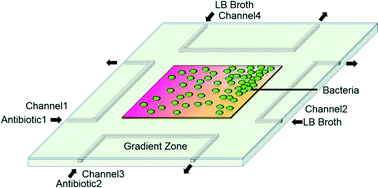
Lab Chip, 2016,16, 3130-3138
https://doi.org/10.1039/C6LC00417B
Delivery of minimally dispersed liquid interfaces for sequential surface chemistry
Rapid liquid switching on a microfluidic probe enables localized multi-step surface reactions.
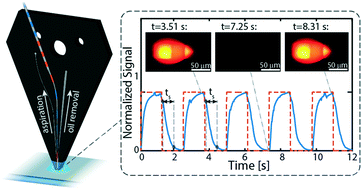
Lab Chip, 2016,16, 3015-3023
https://doi.org/10.1039/C6LC00473C
A microfluidic device integrating dual CMOS polysilicon nanowire sensors for on-chip whole blood processing and simultaneous detection of multiple analytes
We report a microfluidic device integrating dual CMOS polysilicon nanowire sensors (MINS) for on-chip whole blood processing and simultaneous detection of Hb and HbA1c.
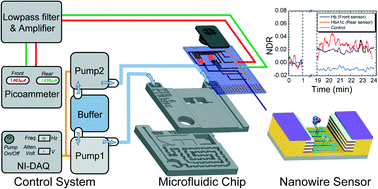
Lab Chip, 2016,16, 3105-3113
https://doi.org/10.1039/C6LC00410E
Portable visual quantitative detection of aflatoxin B1 using a target-responsive hydrogel and a distance-readout microfluidic chip
A distance-readout microfluidic chip was combined with an AFB1-responsive hydrogel for rapid, portable, selective, and quantitative detection of AFB1 in real samples.
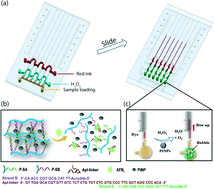
Lab Chip, 2016,16, 3097-3104
https://doi.org/10.1039/C6LC00474A
A microfluidic flow focusing platform to screen the evolution of crude oil–brine interfacial elasticity
Multiphase fluid flow dynamics dominate processes used to recover the majority of hydrocarbon resources produced by global energy industries.
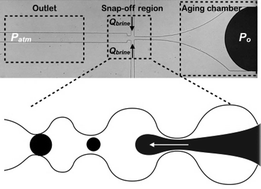
Lab Chip, 2016,16, 3074-3081
https://doi.org/10.1039/C6LC00287K
Graphene-based microfluidics for serial crystallography
A robust strategy for the incorporation of graphene films as a diffusion barrier in ultra-thin X-ray compatible microfluidic devices.
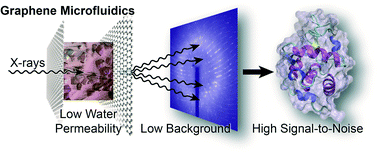
Lab Chip, 2016,16, 3082-3096
https://doi.org/10.1039/C6LC00451B
A microphysiological model of the human placental barrier
We present a microengineered cell culture device designed to mimic the maternal–fetal interface in the human placenta.
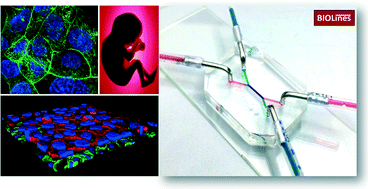
Lab Chip, 2016,16, 3065-3073
https://doi.org/10.1039/C6LC00259E
Confinement and viscosity ratio effect on droplet break-up in a concentrated emulsion flowing through a narrow constriction
This paper describes the dimensionless groups that determine the break-up probability of droplets in a concentrated emulsion during its flow in a tapered microchannel consisting of a narrow constriction.
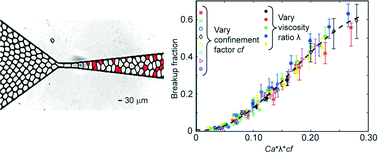
Lab Chip, 2016,16, 3058-3064
https://doi.org/10.1039/C6LC00478D
Magnetic Nickel iron Electroformed Trap (MagNET): a master/replica fabrication strategy for ultra-high throughput (>100 mL h−1) immunomagnetic sorting
We present a new approach to microfabricate micromagnetic sorting devices that can achieve highly specific cell separation at a throughput (ϕ > 150 mL h−1) 100× greater than conventional microfluidics.
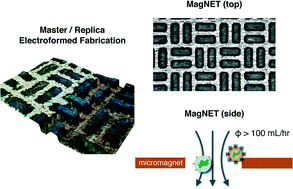
Lab Chip, 2016,16, 3049-3057
https://doi.org/10.1039/C6LC00487C
High-throughput superhydrophobic microwell arrays for investigating multifactorial stem cell niches
A superhydrophobic microwell array chip (SMARchip) was developed for high-throughput screening.
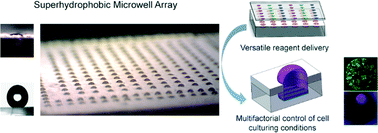
Lab Chip, 2016,16, 2996-3006
https://doi.org/10.1039/C6LC00331A
Non-spherical particle generation from 4D optofluidic fabrication
We present a novel method for creating asymmetric three-dimensional particles termed 4D optofluidic fabrication utilizing inertial and gravity-induced flow shaping and UV polymerization.
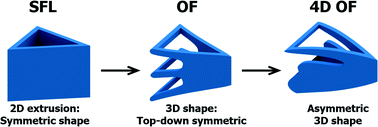
Lab Chip, 2016,16, 2987-2995
https://doi.org/10.1039/C6LC00208K
Arrayed water-in-oil droplet bilayers for membrane transport analysis
We developed an arrayed water-in-oil droplet bilayer system for highly sensitive and quantitative membrane transport analysis.
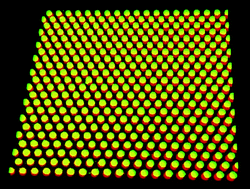
Lab Chip, 2016,16, 3043-3048
https://doi.org/10.1039/C6LC00155F
Ultrasensitive microfluidic analysis of circulating exosomes using a nanostructured graphene oxide/polydopamine coating
A GO-induced 3D nanoporous PDA surface coating was developed to substantially improve the sensitivity of immuno-detection of circulating exosomes directly in clinical samples.
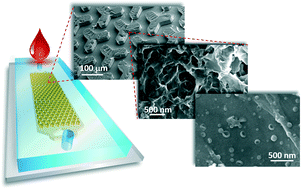
Lab Chip, 2016,16, 3033-3042
https://doi.org/10.1039/C6LC00279J
Optofluidic restricted imaging, spectroscopy and counting of nanoparticles by evanescent wave using immiscible liquids
An integrated optofluidic chip for restricted imaging, spectroscopy and counting of nanoparticles using the evanescent wave of total internal reflection at the interface of immiscible flows.
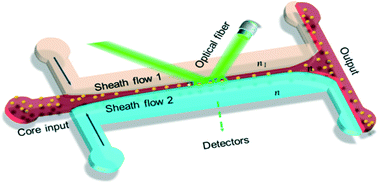
Lab Chip, 2016,16, 3007-3014
https://doi.org/10.1039/C6LC00078A
Onset of particle trapping and release via acoustic bubbles
We quantitatively analyze the secondary radiation force of an acoustic bubble for particle trapping and release in a flow.
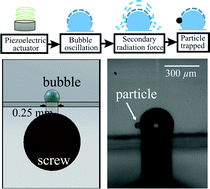
Lab Chip, 2016,16, 3024-3032
https://doi.org/10.1039/C5LC01420D
About this collection
Lab on a Chip is committed to supporting early career scientists, and it is because of this that we are both proud and very pleased to introduce the 2016 edition of our Emerging Investigators issue, which celebrates the most promising and brightest amongst early career miniaturisation scientists around the world. The fourth Emerging Instigators issue was guest edited by Yanyi Huang, Sarah Köster and Charles Schroeder who worked hard to create this issue and ensure that its content was of the highest quality. Please read the articles below to see how our Emerging Investigators are contributing to the world of miniaturisation.